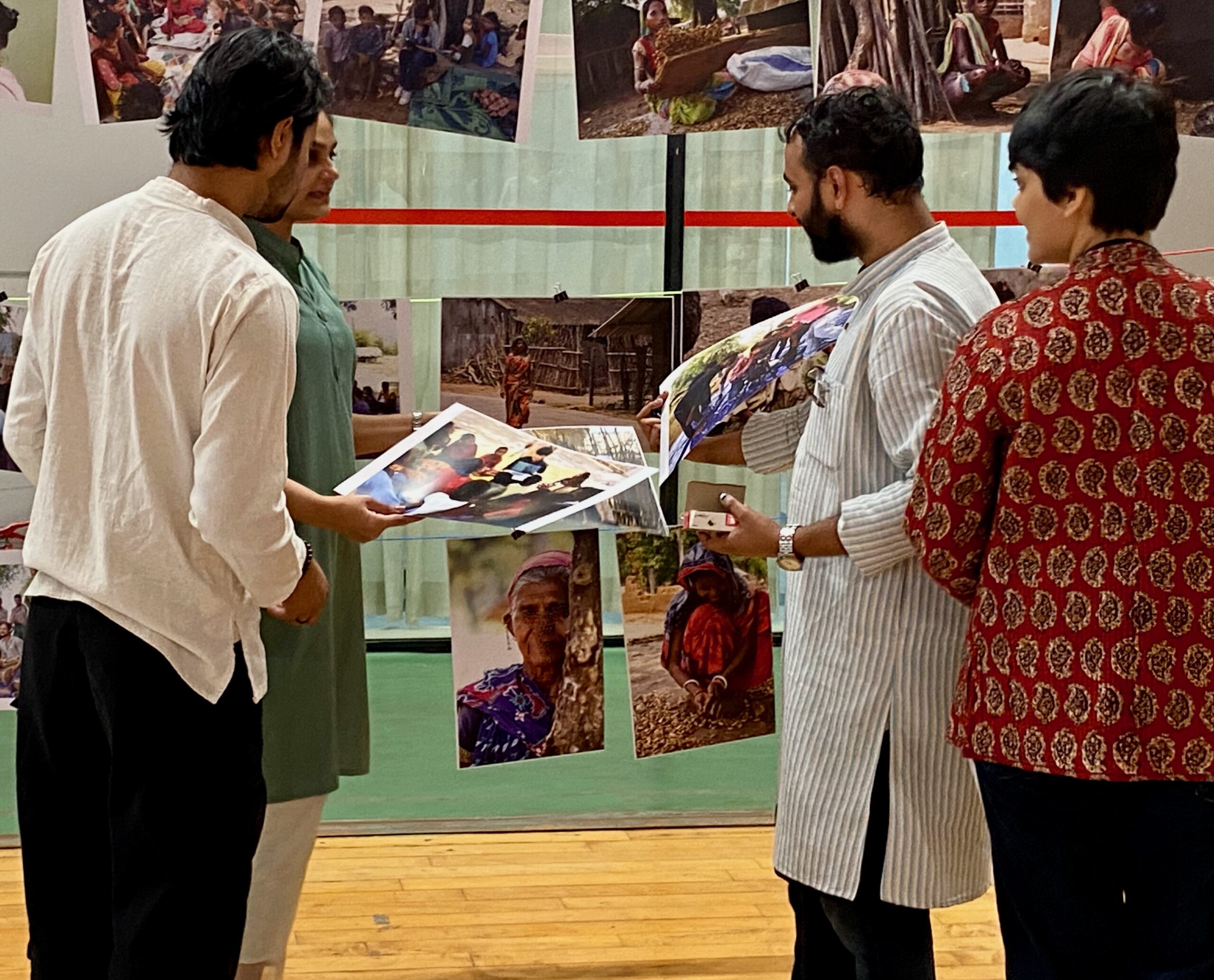2024-01-15
Photography helps build capacity – and an enduring bond – between communications students and indigenous communities in India’s Odisha State.
Young people training young people.
That is what Alvia Syed and fellow students from the AJK Mass Communication Research Centre at Jamia Millia Islamia did as part of a class project to train indigenous children and young people in photography.
“It was a beautiful experience … a journey of learning for us,” Syed explained as she guided a visitor through a photo exhibit during the International Learning Exchange (ILEX) in Delhi. For some of the nearly 20 students involved, it was their first exposure to indigenous communities, and their first experience working in a training capacity.
There were challenges, including a language barrier for some of the students. Odia is the main language of the Odisha region, where the training took place, and Hindi is more common among the students. Nonetheless, they formed a common bond.
“It was a perception-changing experience to be in these homes and villages,” Syed recalled. “The young people were drawn to us and we were able to build compatibility and create a safe space with them.”
"Photos help initiate engagement and change perceptions."
Building capacity
Photography was just one part of the peer training. There was also street theatre, puppetry, comics and filmmaking, all of which were designed to create awareness and help give the young indigenous villagers a voice in their communities.
It was just one of the innovative sharing and training programmes taking place in Odisha’s indigenous communities. In partnership with the Tenure Facility and its initiative on the forest economy (IoFE), the Indian School of Business earlier this year collaborated with the AJK Mass Communication Research Centre to train 40 female volunteers on mobile-based short filmmaking and storytelling.
The Jungle Ranis (Queens) from Malkangiri project was led by a dynamic group of young indigenous women, who used video storytelling to shed light on the relationship between forests and communities.

Imran Nazir (left) Laiba Qamer, Ayanabha Banerjee and Alvia Syed select photos as they prepare an exhibit during the International Learning Exchange (ILEX) at Delhi University.
Photos for forest futures
Syed’s passion is photography, and she joined three other students – Imran Nazir, Laiba Qamar and Ayanabha Banerjee – in setting up their photo exhibit during the ILEX focusing on ‘Radical Forest Futures’.
“Photos help initiate engagement and change perceptions,” Syed said, stressing that photography is not just about enjoyment. “The villagers can use photos to support their land claims and to help them get support during disasters,” she explained, adding that media also play a role in social development.
Participants from 18 Indian states and around 30 countries engaged in discussions about threats to indigenous communities during the three-day ILEX, which took place in early November on the campus of Delhi University. It was organised by the Policy Development Advisory Group; the Indian School of Business (ISB); the Society for Rural, Urban and Tribal Initiative (SRUTI); Vasundhara; the School of Planning and Architecture in New Delhi; and the AJK Mass Communication Research Centre.
Tenure Facility was a finance partner of the ILEX. The event focused on exchanging ideas and building on grass-roots efforts to address risks to strengthen land tenure rights or reverse efforts to weaken them.
Articles